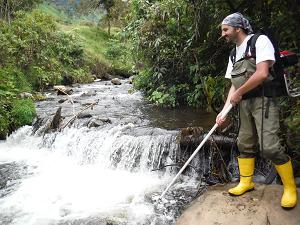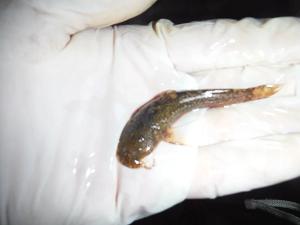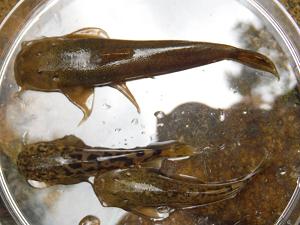Alexander Alexiades
To understands impacts of dams on rarely studied endemic fish species which will directly inform conservation and management efforts in the Napo River Basin.

Fresh water resources will become increasingly valuable as increased demands for clean drinking water and hydroelectric power create tension with decreasing supply due to reduced snowpack, glacier recession, and other climate change effects. Flow reductions from hydroelectric dams pose a unique threat to native aquatic and riparian species by drastically altering the conditions in which species evolved. Currently, at least 48 major hydroelectric dams (> 100 megawatts) are operating in the Tropical Andes (within Colombia, Ecuador, Peru, and Venezuela), with plans to build hundreds more over the next 20 years. Yet, sites of high dam suitability may also harbour high species diversity, creating an urgent need to better understand effects of hydroelectric dams in the Napo River Basin, a centre of global freshwater diversity.

The Ecuadorian Andes region is especially critical for conservation as it is home to 5.5 million people and some of the most diverse and endangered ecosystems on Earth. Globally, freshwater fishes are among the world’s most endangered vertebrates and the Tropical Andes is a major centre of freshwater diversity. As an important contribution to a larger collaboration, I will examine the impact of localized hydroelectric development pressure on the hydrology, ecology, and native fish species of the Napo River watershed with funding from the Rufford Foundation. The Napo River, a biodiversity hotspot, is one of the largest and most diverse systems in the Tropical Andes. The Napo is projected to be highly affected by planned hydroelectric developments. Taxonomic knowledge of tropical Andean fishes in the basin remains incomplete, and new species are still being described in the main Andean genera (Astroblepus; Trichomycterus; Chaestostoma, Dolichancistrus, Cordylancistrus, Bryconamericus, and Grundulus). Undiscovered species within these genera may be lost in systems affected by proposed hydroelectric developments, highlighting the importance of understanding the flow-ecology relationships and life history of endemics within the Napo Basin as part of a comprehensive conservation plan.
